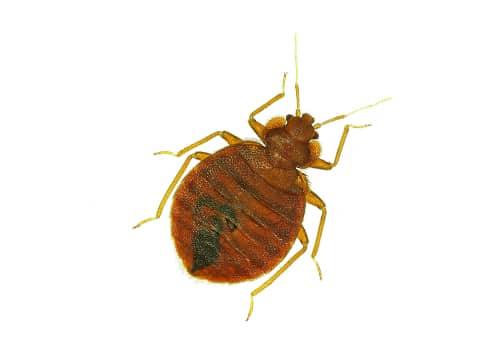Get a free estimate
If you have questions about our services, plans, or pricing we are here for you. Fill out the form below and we will communicate with you by email (and of course provide you with a free estimate).
FEBRUARY 15 2022 /
If you've found bugs inside your home, especially in your bed, it is only natural to wonder if you have bed bugs.
These tiny pests have been making quite a name for themselves since their reappearance in the United States a little over a decade ago. But not every bug you find in your bed is a bed bug.
Here are some answers to the frequently asked questions we get about bed bugs. Hopefully, they will help you shed some light on whether or not you have these bugs infesting your home.

Adult bed bugs are rust-colored, but they don't start out that way. Newly hatched bed bugs have transparent skin and will look pale if they have not fed, and bright red if they have had a blood meal.
Bed bug larvae start off as small as the tip of a pen. Once they reach their adult stage, bed bugs are about the size of an apple seed, or about 4.5 millimeters.
Since bed bugs are so small when they first hatch, an infestation can go undetected for several weeks. It is important to recognize a bed bug if it is feeding on your skin. This is when it will be bright red and slightly more noticeable.
All bed bugs have an oval shape and will be flat when unfed and pill shaped when fed.
Yes. Bed bugs are insects. So they have six legs and two antennae, like all insects. This helps to distinguish them from adult mites and arachnids. But, unlike other insects, bed bugs do not have three distinct body parts, like a wasp or an ant.
As insects, bed bugs are often mistaken for other insects. One insect that gets confused with bed bugs quite often is the carpet beetle. This is because both of these are small insects with an oval shape.
But adult bed bugs make it easy to distinguish themselves from carpet beetles and other insects.
They have no colored patterns or dots on their rust-colored skin, and their abdomens have recognizable horizontal indentations that clearly set these bugs apart.
If you have found bugs that you think maybe bed bugs, here are a few more ways to make sure:
⭐ Look for blood stains on pillowcases, sheets, mattress seams, and the stitching on upholstered furniture.
This blood staining will often be mixed with the black coloring of their feces because blood is often excreted with their droppings.
⭐ Inspect mattress seams for black fecal residue, and look for black streaks on pillowcases, sheets, baseboards, and wall outlets.
Like mice, bed bugs leave their excrement everywhere they go. If bed bugs are infesting a mattress or piece of furniture, their excrement will often be quite noticeable.
⭐ Bed bugs congregate together. If you're finding lots of bugs together, and they have the characteristics mentioned above, they are bed bugs.
These are also fast-moving bugs. If you pull up a mattress and see lots of oval bugs moving around quickly, you can be sure they are bed bugs.
⭐ Bed bugs go through 5 instars (development stages) before they reach adulthood.
When they pass from one instar to the next they shed their cuticle (skin). These shed insect parts can be found everywhere bed bugs live and travel. They can often be found stuck to the black excrement left on furniture stitching or on the seams of mattresses.
If you find these bugs in your home, there are a few things you should be aware of.
Getting rid of mattresses and furniture hardly ever gets rid of a bed bug infestation, and it will only work to spread the infestation to someone else who may see your discarded furniture as an opportunity to get free stuff, even if you put a note on the furniture warning of bed bugs.
It is also vital to understand that bed bugs are extremely hard to exterminate without education in bed bug control protocols and experience in eradicating these insects.
Don't take chances with bed bugs. Call the bed bug experts at American Pest for safe and complete removal of these bugs.